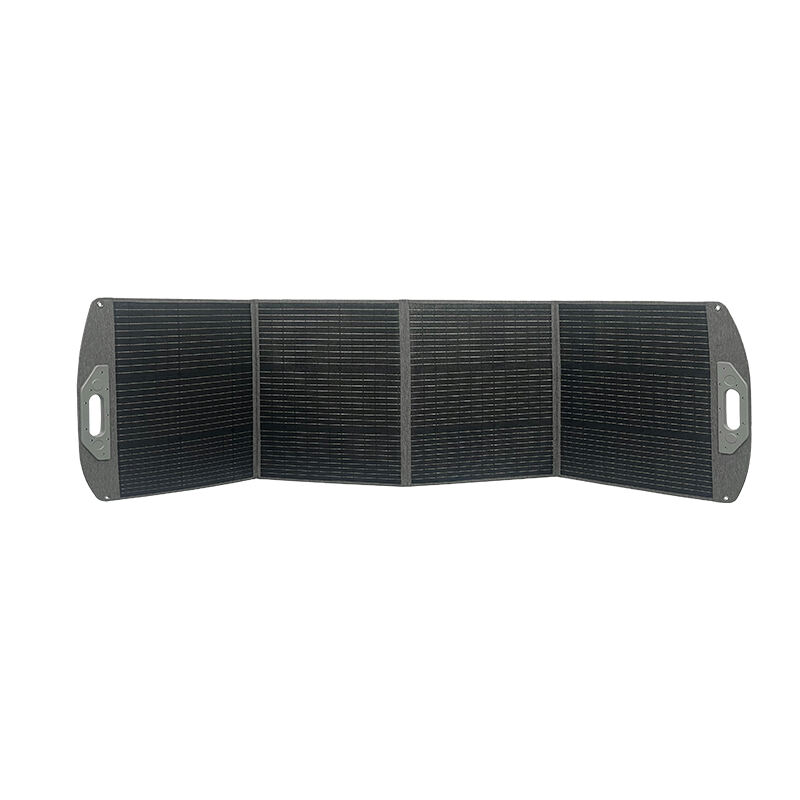Organometal halide perovskite solar cells (PSC), a type of thin film technology, are being developed by various companies within this framework in order to produce high efficiency low cost flexible photovoltaics. Perovskite crystals typically contain a mixture of organic and inorganic materials that can capture the sun's rays, then convert them into usable energy. Matsuhisa et al., Science Robotics 4; eaau8065 (2019)] Over the past few years, perovskite solar cells are among the frontrunners and researchers have made a lot of progress in developing these devices.
Perovskite Solar Panels - The future Of Renewable Energy?
The future of perovskite solar panels as renewable sources is very promising. According to Wright, it is estimated that perovskite PV could have efficiencies higher than state-of-the-art silicon solar panels and potentially be significantly cheaper; more easily manufactured; lighter, thinner and flexible. These properties make them a frequently studied candidate, and considerable efforts have been made towards creating long-lasting cell structure that should be able to survive under different types of weather.
Perovskite cells have the same basic structure as traditional solar cells, but with a few important differences. Perovskite solar panels consist of a layer of perovskite material that is sandwiched between two electrodes. The material for catching sunshine and creating an electric power. Light in, electrons out - which can be captured and routed to create an electric current for all sorts of useful applications.
Perhaps the biggest advantage of perovskite solar panels is that they can be made at lower cost. They cost less to manufacture, are more efficient and simpler fresher ready silicon panels. The materials needed to construct perovskite cells are also much more plentiful (and therefore cheaper). They can also be more flexible and thinner than traditional panels, so they may suit a wider array of products over conventional solar cells as well.

When deciding between traditional or perovskite solar panels, it boils down to efficiency, sustainability and also price. Conventionally, perovskite solar panels are efficient and can generate a higher amount of electricity than conventional silicon-made-type. That said, traditional panels have had lengthy records of durability and wind tolerance in all sorts of exacting environments. Today, these are not quite dead and many of regions see traditional panels (crystalline) only in their energy installs.
Another very important factor in the decision is price. Perovskite solar panels show great potential for future installations of the technology, however they are not cheap and may break down soon. This makes them relatively rare and thus slightly more difficult to locate or buy than normal panels, and possibly with a lack of cost effectiveness in the short term. Nevertheless, as perovskite evolves continuously and goes further in development it is not far that the price of these cells will be falling down making them Affordable to many people from individuals or institutions.

Perovskite solar panels have a lot of exciting potential applications. Especially in the world of wearable. These characteristics make perovskite solar panels - which can be squished on top of and under other surfaces because they are so lightweight, bendable or even semi-transparent enough to allow them to double as windows like DSSC technology (e.g., used in the Eden Project greenhouse) well-suited for small, portable devices that would benefit from providing power while out-and-about. Their efficiency and low cost also make them a perfect fit for indoor electronics such as cellphons, tablets and other lower power devicees where traditional solar panelling isn't practical.
In addition, there is great room for the large-scale power generation of perovskite solar panels. High capacity solar installations using these cells could lower greenhouse gas emissions by replacing large amounts of fossil fuel use with renewables, in the aggregate.

Perovskite solar panels are cheap, efficient and flexible, which is why they hold strong potential as a renewable future-energy source. Traditional panels are pretty reliable and have already stood the test of time although perovskite solar panels could very well take over in a few years as they, for one thing, cost much less to make than traditional ones while this new technology allows it to be able hold on to more power generated simply due its higher efficiency at capturing sunlight.
With further advancement of perovskite-based solar panels, the potential to utilize them in an array of applications - from wearable technology devices to massive scale solars farms are on horizon. Perovskite technology can help save the world from climate change and cut emissions, so it's really interesting to think what else might be possible in terms of renewable energy with perovskites.
We're committed perovskite solar panels neutrality sustainable development supply best energy storage solutions around world. We committed sustainable, greener future customers helping achieve energy efficiency environmental targets.
core business CI Energy Storage Integration Services. We a provide Residential Energy Storage Systems perovskite solar panels Power Stations. We specialize custom-designed energy solutions diverse applications.
commitment revolves around satisfaction customers. provide comprehensive support service provide best user experience possible. includes thorough perovskite solar panels assistance both prior after sales, providing clients confidence security throughout journey us.
Leveraging state-of-the-art technology provide secure efficient energy storage solutions. EMS can automate strategies electricity efficiently enhance functionality products. system controls electricity automatically based perovskite solar panels conditions prices electricity. Users adjust use according optimal conditions preferences.